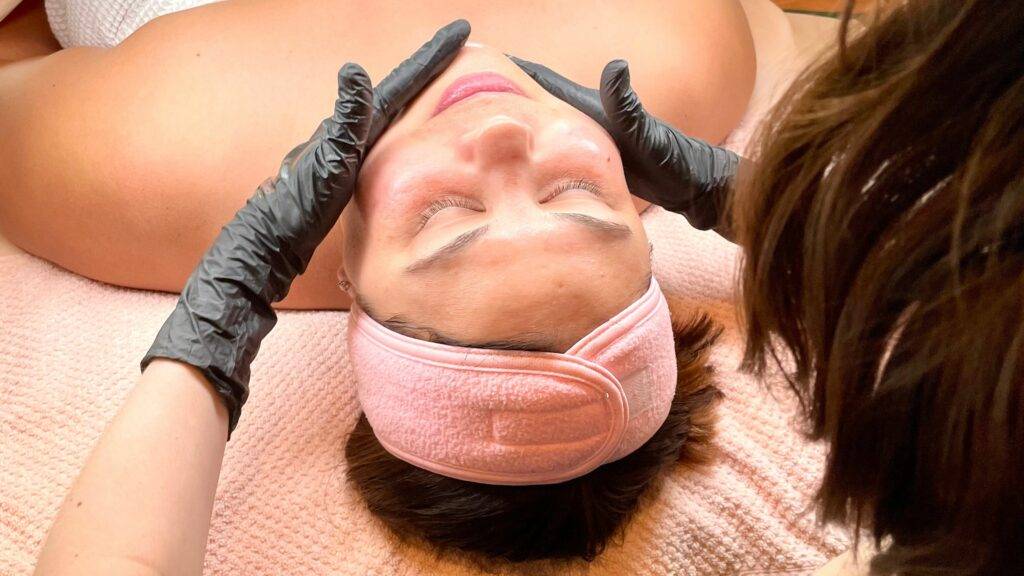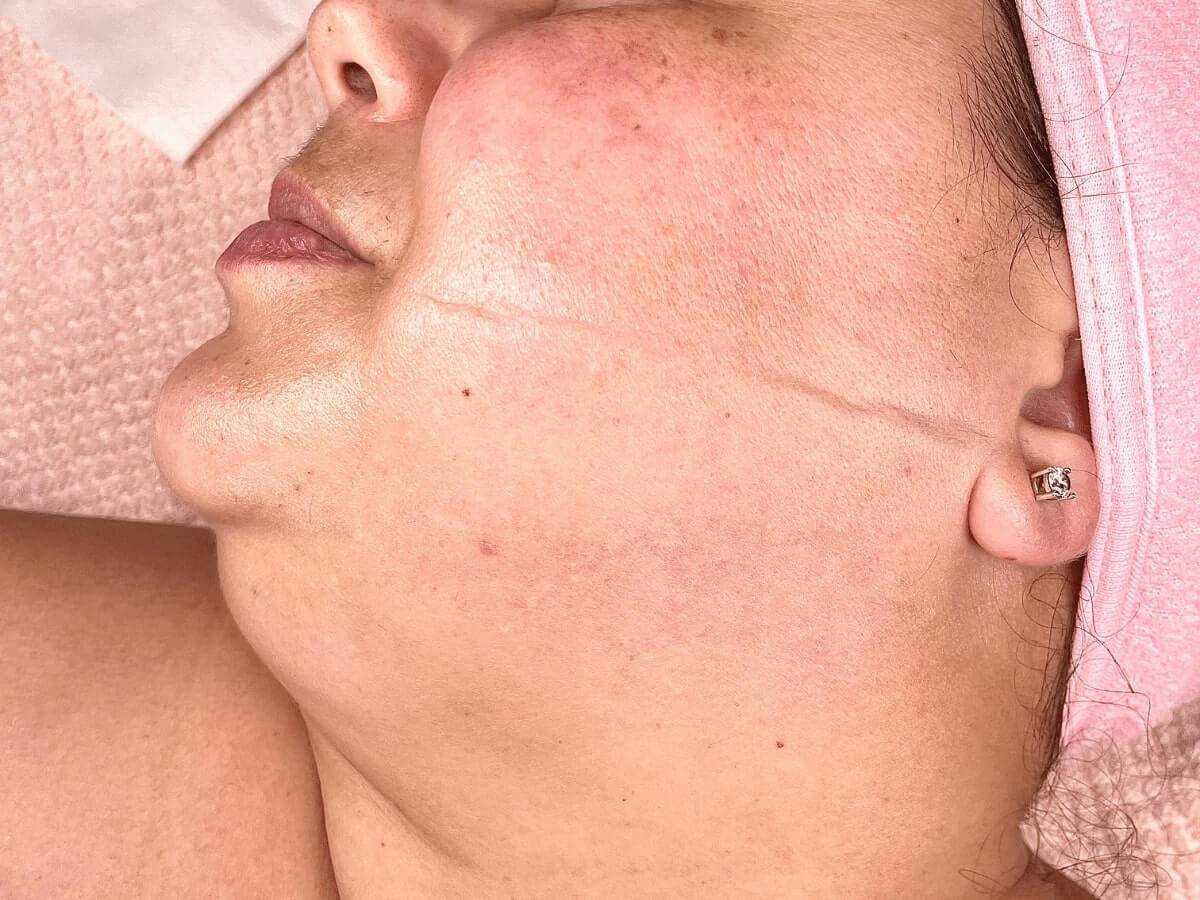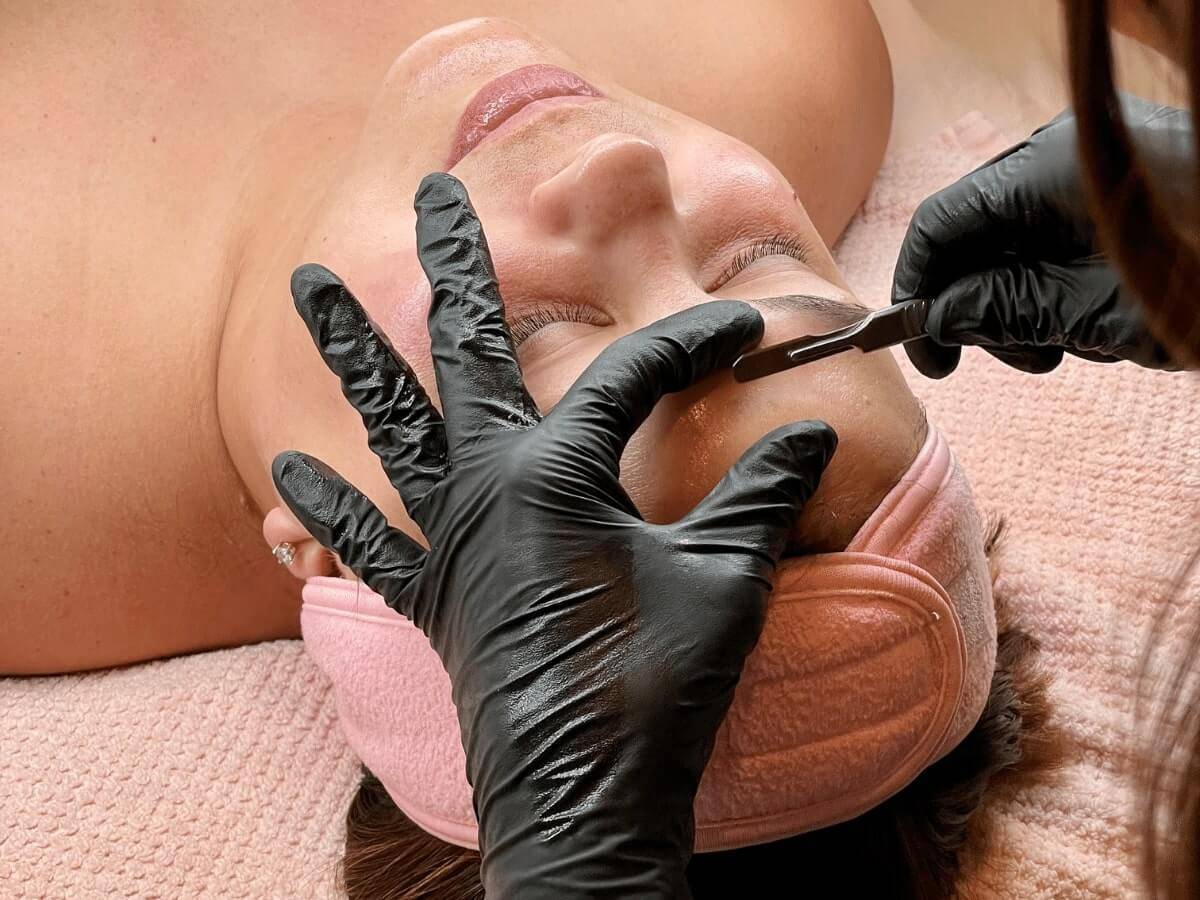Experience the magic of dermaplaning for a glowing and smooth complexion.
Unveiling the Magic of Dermaplaning
If you’re someone who craves a flawless complexion and dreams of skin that’s as smooth as silk, then dermaplaning might just be the answer to your skincare prayers. This non-invasive exfoliation technique has gained popularity in recent years for its ability to transform dull, lackluster skin into a glowing canvas. But how does dermaplaning work its magic? In this article, we’ll discuss all you need to know about dermaplaning, from its benefits, myths, to frequently asked questions (FAQs).

Understanding the Basics of Dermaplaning
Dermaplaning is a skincare treatment that involves using a surgical-grade scalpel to gently scrape away the top layer of dead skin cells and fine vellus hair, also known as peach fuzz, from the surface of the skin. This process is performed by a trained skincare professional in a controlled and precise manner, ensuring that the skin is left smooth and rejuvenated.
The Process of Dermaplaning
Dermaplaning is typically performed on clean, oiled skin that has been thoroughly cleansed and prepped. The skincare professional holds the scalpel at a 45-degree angle and gently scrapes it across the skin in short, sweeping motions. The blade is used to remove the dead skin cells and peach fuzz, revealing fresh, new skin underneath. The process is painless and leaves the skin feeling refreshed and rejuvenated.
Benefits of Dermaplaning
Dermaplaning offers a plethora of benefits for the skin, making it a sought-after treatment for those looking to improve their complexion. Some of the key benefits of dermaplaning include:
1. Smoother and brighter skin
One of the main benefits of dermaplaning is smoother, brighter-looking skin. By removing the top layer of dead skin cells, dermaplaning helps to eliminate impurities, allowing fresh, rejuvenated skin to emerge. Dermaplaning leaves the skin feeling incredibly smooth and soft, with a radiant glow that can last for weeks.
2. Enhanced product absorption
Dermaplaning also improves product absorption, which means facial serums and moisturizers penetrate deeper into the skin and provide significant benefits to the skin. With the removal of the top layer of skin, dermaplaning can help enhance the effectiveness of skincare products, as it allows for better penetration of active ingredients into the skin.
3. Exfoliation
Dermaplaning helps with exfoliation that can improve skin texture and uneven skin tones commonly associated with scars. Dermaplaning provides a deep exfoliation that helps to unclog pores, remove dead skin cells, and promote cell turnover, resulting in a smoother and brighter complexion.
4. Better makeup application
Dermaplaning notably enhances make-up application, with makeup such as foundations sitting easily on smoother skin. With peach fuzz removed, makeup application becomes smoother and more even, resulting in a flawless finish.

The Dermaplaning Procedure
Dermaplaning has a smooth, simple, and painless process that can be completed in less than an hour depending on your skin and goals. Jules will provide you with a relaxing environment while using a small, sterilized scalpel to gently brush the top layer of skin. The process removes years of dead skin, dirty oils, and vacuums fuzz from the top layer of the epidermis.
Frequently Asked Questions
As with any skincare treatment, dermaplaning can result in inquiries. Here are some frequently asked questions about dermaplaning:
Q: Is dermaplaning painful?
A: No, dermaplaning is generally not painful. The scraping sensation is usually described as mild and there should be no discomfort.
Q: Is dermaplaning suitable for all skin types?
A: Yes, dermaplaning can be performed on all skin types and colors, although it may not be recommended for those with active acne or extremely sensitive skin. If you are susceptible to hyperpigmentation, it is best to pre-treat with a tyrosinase inhibitor for at least 2 weeks before being dermaplaned.
Q: How long does a dermaplaning treatment take?
A: A typical dermaplaning treatment can take anywhere between 30 to 60 minutes long.
Q: How often should I get dermaplaning done?
A: The frequency of dermaplaning treatments can vary depending on individual skin needs and the recommendation of your skincare professional. Generally, dermaplaning can be done every 3 to 4 weeks for maintenance, but it’s excellent to consult with your skincare professional for tailored advice.
Q: Is there any downtime after dermaplaning?
A: There typically isn’t any downtime after dermaplaning. Because the treatment is non-invasive, do not require any recovery time. Although some redness or mild sensitivity may occur immediately after the treatment, it usually, rapidly subsides.
Q: Can I do dermaplaning at home?
A: Dermaplaning is a professional skincare treatment that is best performed by a trained and experienced skincare professional. Attempting to do dermaplaning at home with DIY tools can be risky and may result in skin damage or other adverse effects. Therefore, we recommend you always seek professional treatment for optimal results.
Debunking Common Myths about Dermaplaning
With the increasing popularity of dermaplaning, there are also some myths and misconceptions surrounding this skincare treatment. Let’s shed some light on the truth behind common myths:
Myth #1 – Dermaplaning causes hair to grow back thicker and darker.
Contrary to this myth, dermaplaning does not alter the texture or color of hair. The fine vellus hair, or peach fuzz, that is removed during dermaplaning grows back at the same rate and with the same texture as before.
Myth #2 – Dermaplaning is painful and unsafe.
Dermaplaning is generally not painful when performed by a qualified skincare expert. The scalpel used is specifically designed to ensure it’s secure and effective. As is typically associated with any skincare treatment, there may be some mild discomfort or sensitivity temporarily, but adverse effects are rare when done by a licensed professional.
Myth #3 – Dermaplaning is only for women.
Dermaplaning is not limited to any gender and can be done for anyone looking to elevate their skin’s aesthetic look and texture.
Myth #4 – Dermaplaning is not suitable for darker skin tones.
Dermaplaning is a safe and effective treatment for all skin types and colors, including darker complexions. To ensure the best results and minimize the risk of post-inflammatory hyperpigmentation (PIH), it is crucial to properly prepare the skin. It is recommended to select a skincare professional who has experience and expertise in providing skincare treatments specifically tailored to different skin types. By doing so, any potential risks can be minimized.
Recap

Dermaplaning is an exceptional choice to keep the facial skin in excellent condition, enhancing the process of skin rejuvenation and maintaining smoother, brighter skin consistently, revealing the skin’s natural radiance – without causing any problems. To achieve the best outcome, consult with a skincare proficient professional, who should evaluate your skin and offer recommendations according to your particular needs and goals. Give dermaplane a try today and rid away dull, lackluster skin to reveal your new smooth, radiant complexion with Dermaplaning.

